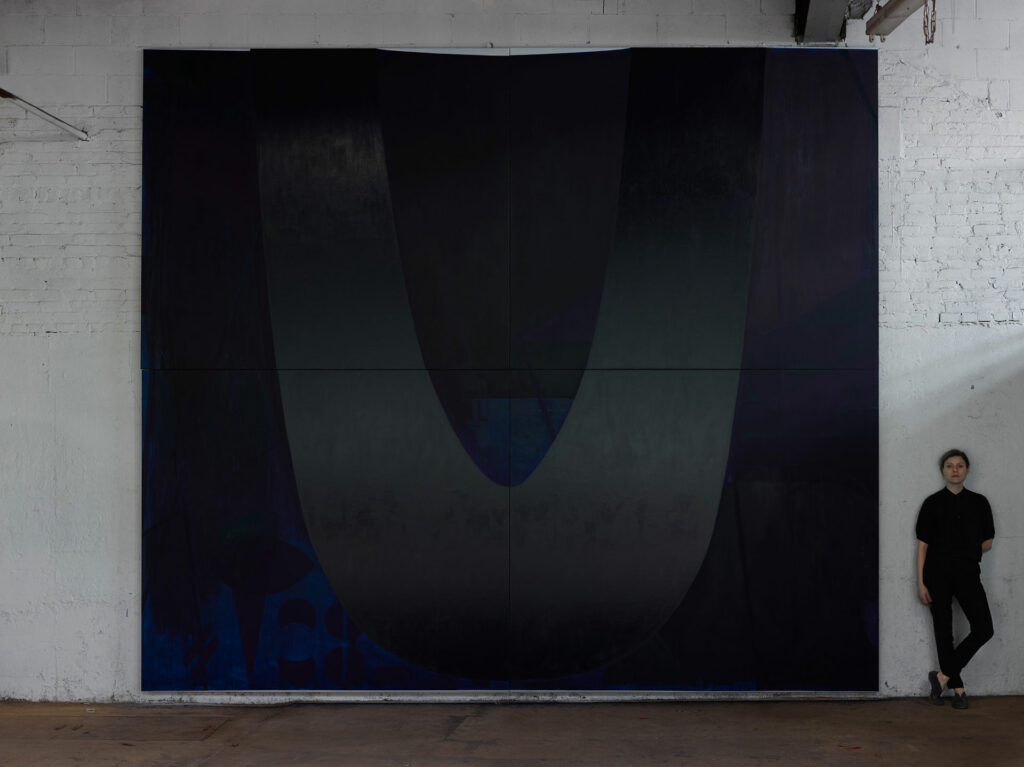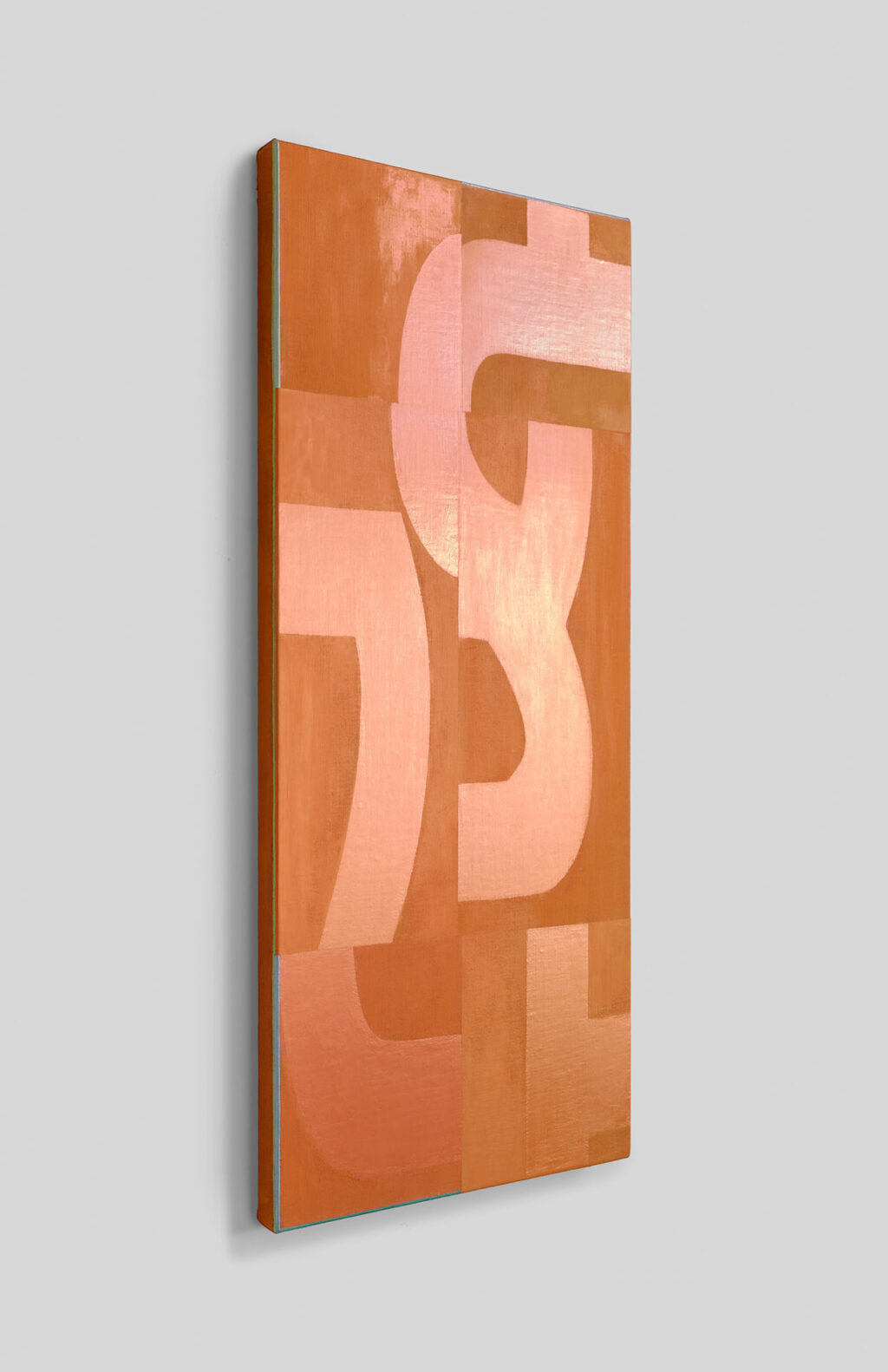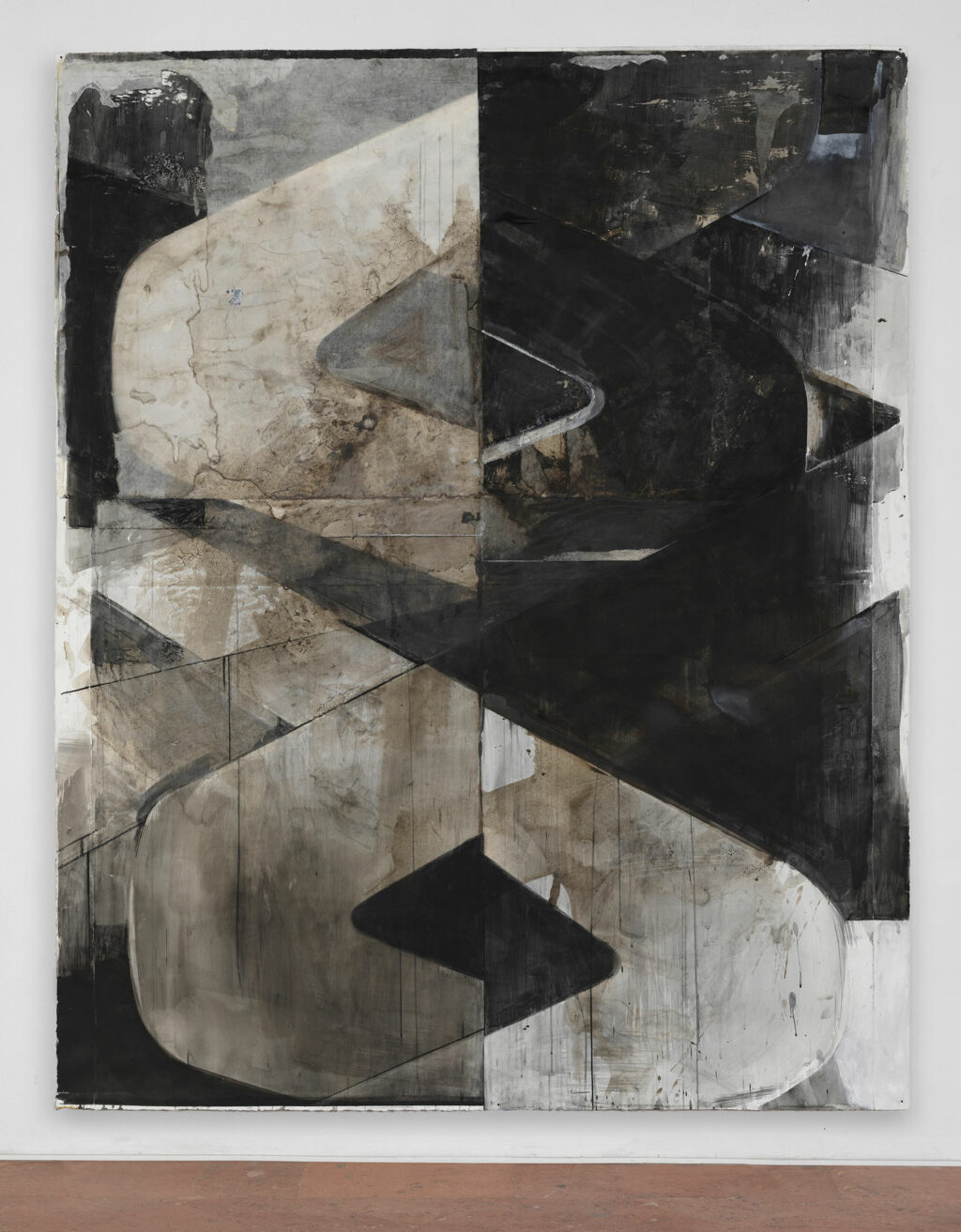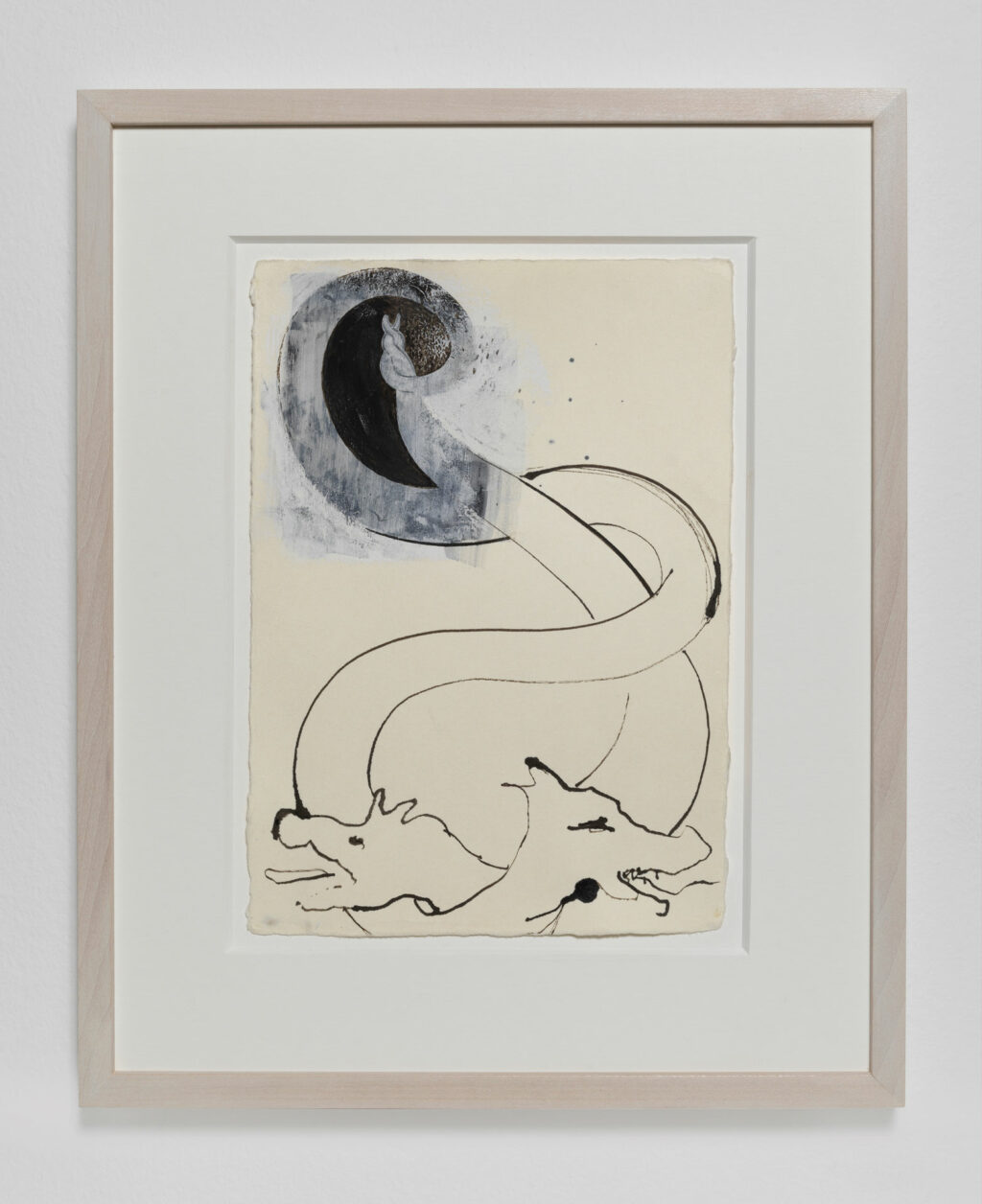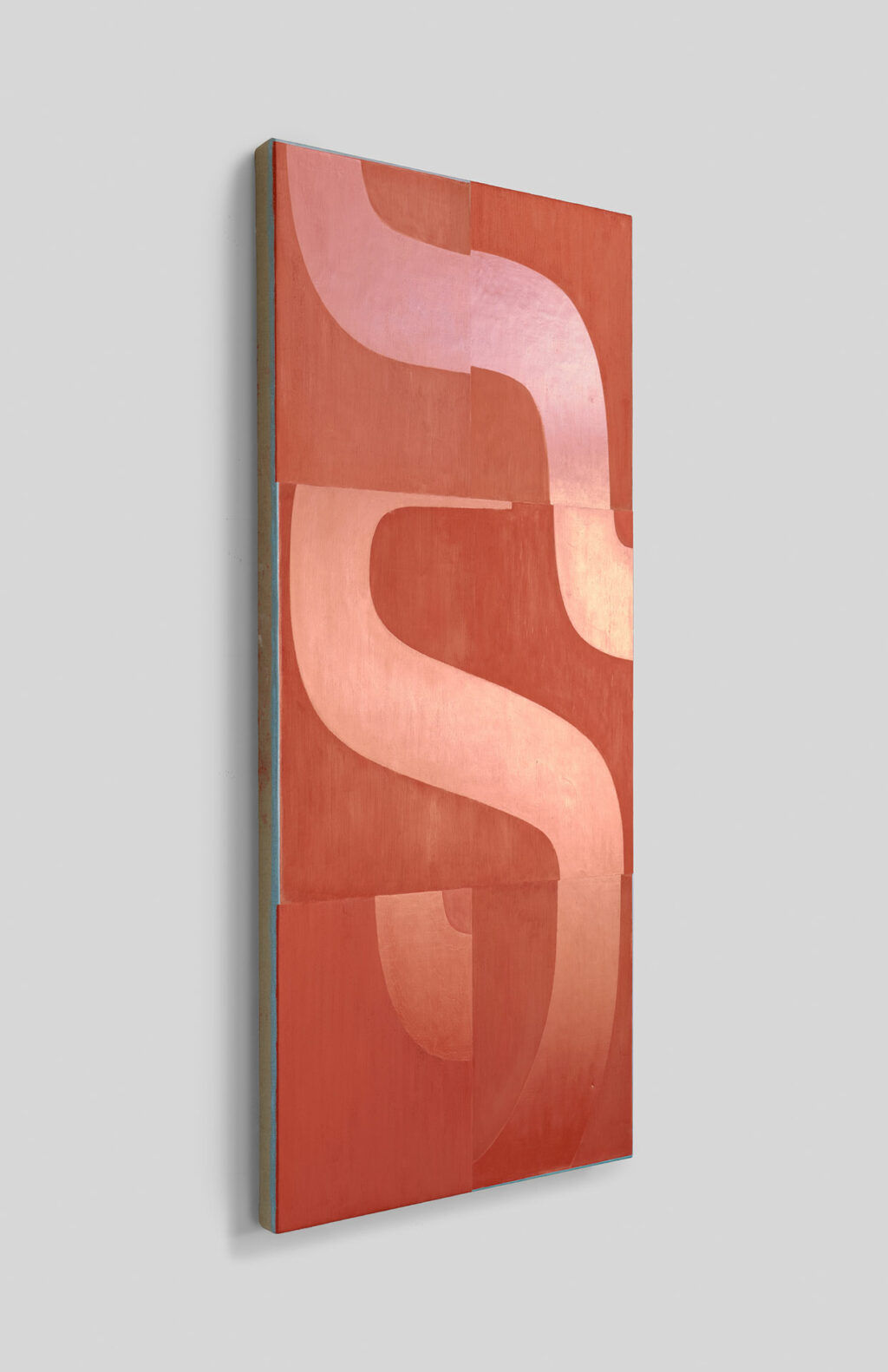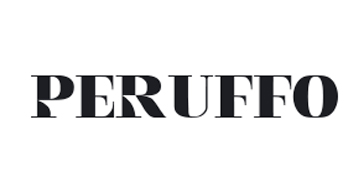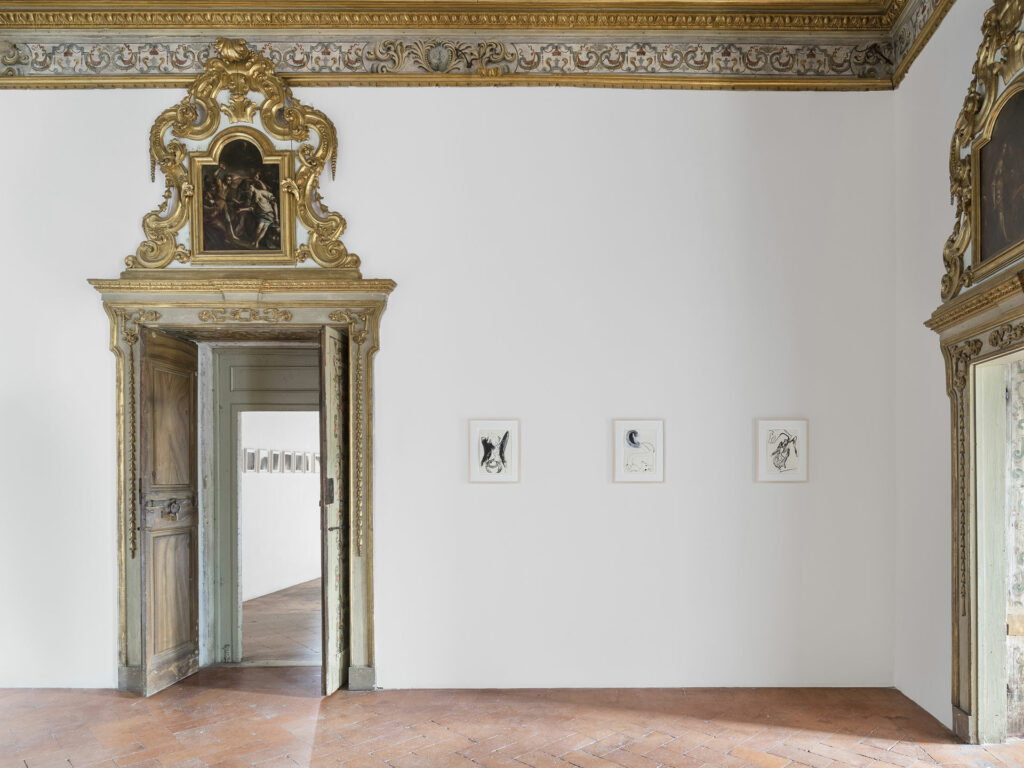
In which way do you feel to express yourself completely?
I can’t begin to imagine what a completely expressed self might be.
I experience myself sometimes as an extrovert, other times maladjusted, sometimes intuitive, other times hyper-analytical … I try to coax expression out of the nervous, ambivalent self sometimes. Dance is a space where I easily go wild, which means embody a devil-may-care lack of inhibition. Painting is different; it incorporates more self-aspects. Consequently, there is more of an oscillation of modes: sometimes the self is in absolute focus, sometimes in a creative outpouring of intellect, sometimes it’s a disciplined manual laborer, etc. There is no “true” or “most” or “complete” here.
Why did you choose painting?
A gut feeling, from when I was a very small child. Pleasure and sanctuary.
If you had to choose a symbol to represent you what would it be?
Walking through a pine forest barefoot on a warm summer day the needles are soft and bouncy.
This is not my answer by the way… just sounds pleasant. I am not into essentializing.
To subvert the rules, being able to do it, which rule would you want to break down?
I think most difficult is becoming aware of the rules. Of course, if they are oppressing you it’s hard to remain oblivious. Judgment and control of other people’s bodies must be confronted continuously. I read a Zadie Smith article on camp this morning, and she was saying that at times when someone has nothing—no agency–they can still walk down the street in a way that says, I have my dignity and your attention, hips swinging wide; a beautiful example of subversion of social norms as a form of empowerment…
I also think the tyranny of work is worth subverting. What an oppressor. More work as play!
Your most successful project and your personal way of designing…
How do you determine success?
That massive painting I made in 2017 entitled Life of Forms was a thrill. Doing this show just now was a miracle, given personal upheavals, as well as the situation in Brescia and the stressors for everyone at A Palazzo Gallery. Although Life of Forms is an achievement, All Rainbows (the recent show) explores a deeper level of vulnerability. In a sense, it’s more of an achievement. Allowing a rough handling of materials that implies thinking out loud, with imperfections and embarrassments in view, is a relief for the viewer. Art like this functions as a permission granting mechanism that says, you are ok as you are, you can let go now and breathe.
What is the material for you?
Light. Isn’t that THE MATERIAL?
All Rainbows in a Brainstem it’s the title of your solo-show at Apalazzo Gallery in Brescia, could you be kind to tell me more about the project?
The show had a theme of heat, which felt novel in that I have worked with sonics and movement and gravity, but not so much with temperature. 2020 was a year of fire and flames, burn burn burn, a funeral pyre. People suffered, their close ones died. All this loss is heartbreaking. I really feel for people. And even if you were reasonably fortunate, the anxiety was bleak.
All Rainbows had paintings in the red to orange spectrum, and ink/charcoal drawings, which are materials literally derived from soot.
I also made small ink drawings of dragons, an archetype I pulled directly from a dream. Dragons respire fire; fire symbolizes purification and facilitates transformation.
The exhibition title came from a line in Anne Waldman’s poem written just before the pandemic. We completed a collaboration in the Spring of 2020, during the most intense period of quarantine. Anne is a legendary experimental New York poet, and so it was an honor and lifeline to work with her. I did a 9-sheet watercolor to accompany the poem, and she in turn adjusted and edited the poem to respond to the visuals.
Why the red?
Blood. I originally conceived of a group of red vertical paintings that looked ladder-like, referring to an incident I had with a man who fell, whose huge pool of blood I cleaned up. The experience of wiping was sacred and humbling. That was in the summer of 2019, but then I didn’t really get into those paintings until the pandemic, at which point the red came to feel more like longing for the intimacy of flesh.
What do you think about collaborations? There is someone with whom you would like to collaborate?
Love. Yes. I’ve been privileged to work with some amazing musicians like Bryce Dessner, and I’d like to do more with them. But they’re busy! I’d like to work with the NY experimental musician Gryphon Rue. I love the music of Nicolas Jaar, who lives in Torino. We have mutual friends and I’d be interested to do something with him, although last I heard he’s given away his record collection and renounced his former life in service of meditation, which sounds like a good move for his work probably. Inner revolution.
My collaborations have always come about through friendship. And I feel honored to have some very brilliant friends.
For the solo-show you worked with the American poet Anne Waldman, why a poet? Could you tell me something about this collaboration and about the book you did together “all rainbows in a brainstem / that we be so contained”, published by Hassla Books?
Anne is a legend. We met at a party years ago. I was driving a group of artists back to the city from a NY upstate party—Dorothea Rockburne, Ron Gorchov, Veronika Shear, and Anne—and we got a flat tire on the highway. After that adventure our friendship was sealed. Poets know things the rest of us don’t. Like Baudelaire said, to get my news I read poetry.
A contemporary artist and a designer that you think are meaningful and why
The octopus. Because it thinks with its whole body, and has a tremendous color & pattern & spatial sensibility.
A short and long-term project that you would like to do…
Well, I’m already onto the next thing, but I don’t want to tell you! Why spoil the surprise?!
But if you read this interview in a year, you’ll see there are clues sewn in…
Nathlie Provosty (b. Cincinnati, OH, 1981) lives and works in New York City. Paintings
have been recently exhibited at the Santa Barbara Museum of Art (2020), the American
Academy of Arts and Letters, NY (2020), the San Francisco Museum of Modern Art
(2019), and the Kunsthall Stavanger, NORWAY (2018); her first one-person institutional
exhibition was held at the Risorgimento Museum in Turin, ITALY (2018-2019). The artist is
represented in the collections of the Albright-Knox Art Gallery (NY), the Baltimore Museum
of Art (MD), the San Francisco Museum of Modern of Art (CA), and the Museum of
Modern Art (NY), among numerous others. In December 2020 Hassla published a new
image/poetry book of the artist with poet Anne Waldman; the collaboration coordinates
with a solo exhibition at A Palazzo Gallery in Brescia, ITALY (Dec 2020 – March 2021).
The book is titled All Rainbows in a Brainstem / That We Be So Contained, and features
work made during the Covid-19 pandemic; it is Provosty’s fourth book, and second
collaboration with a remarkable poet (the first being The Color Mill with Robert Kelly in
2014).
Instagram: @nathlie.provosty
